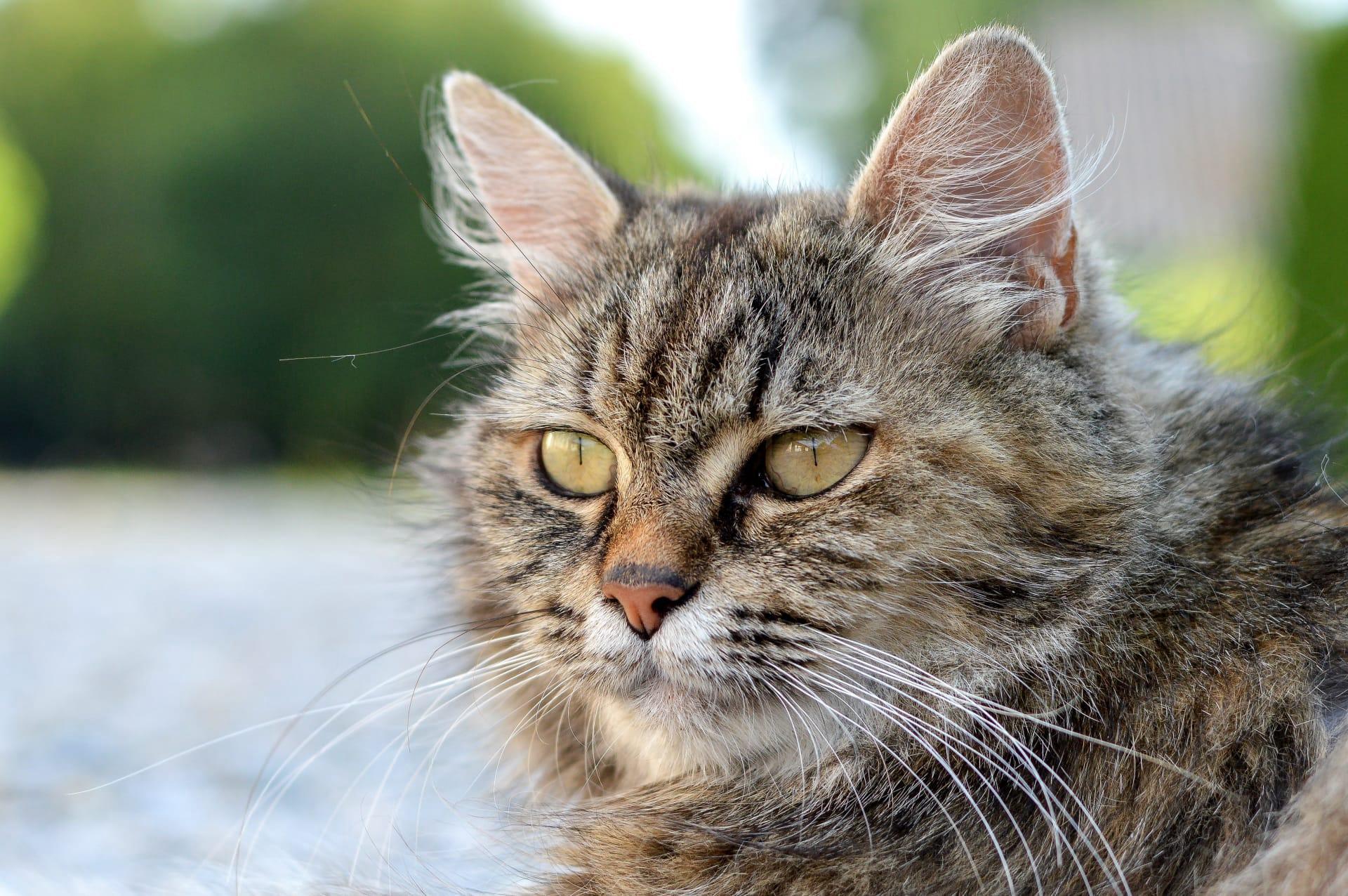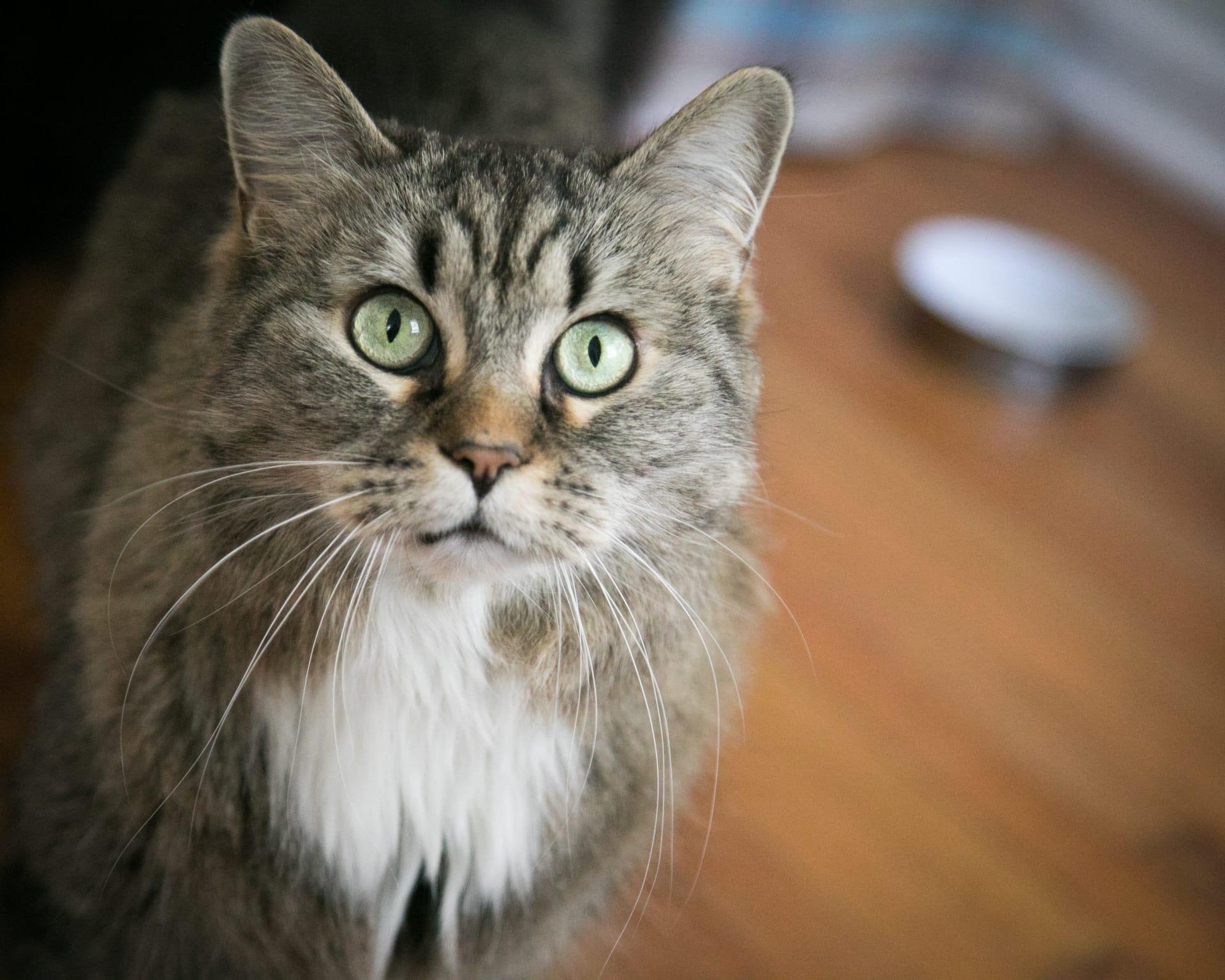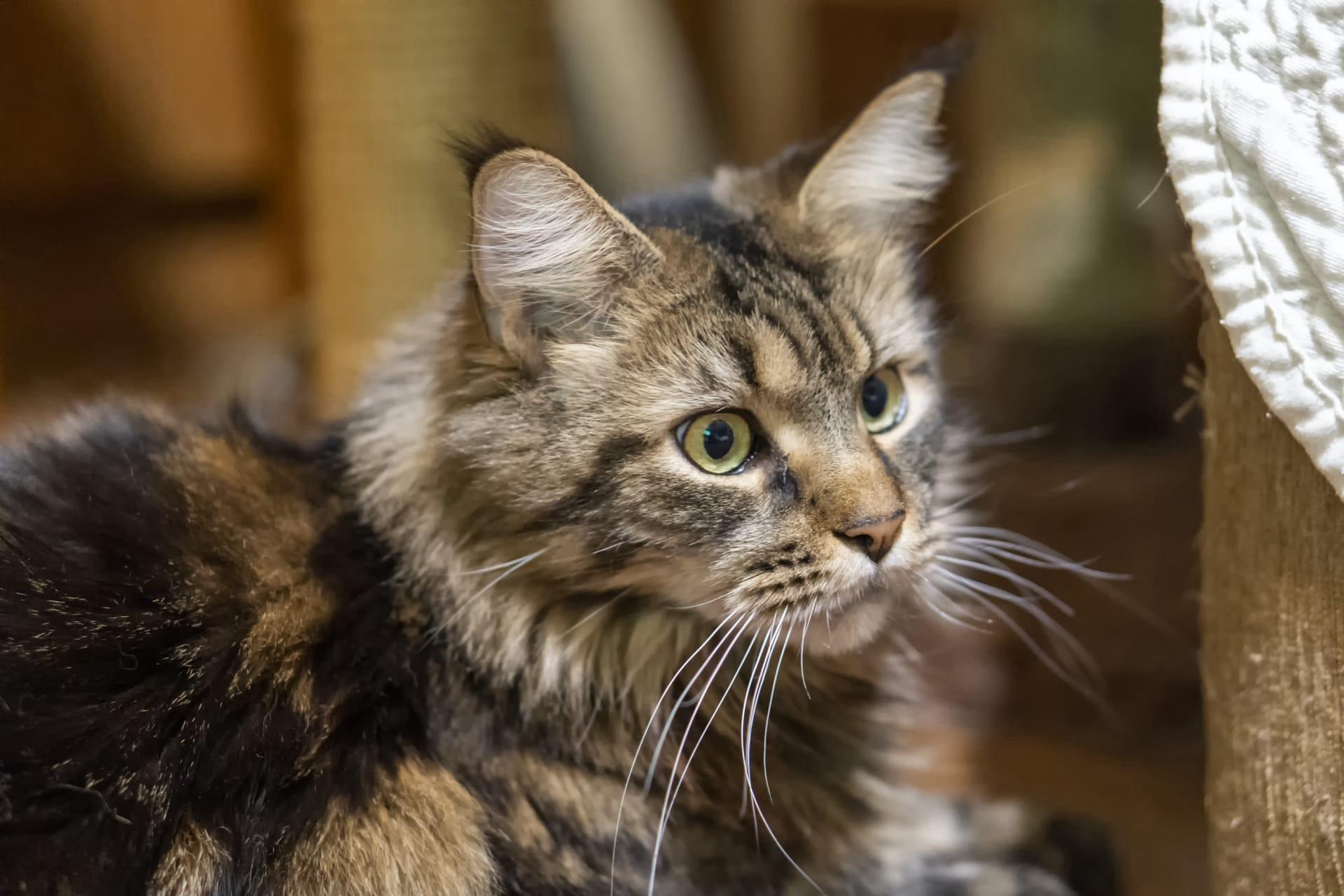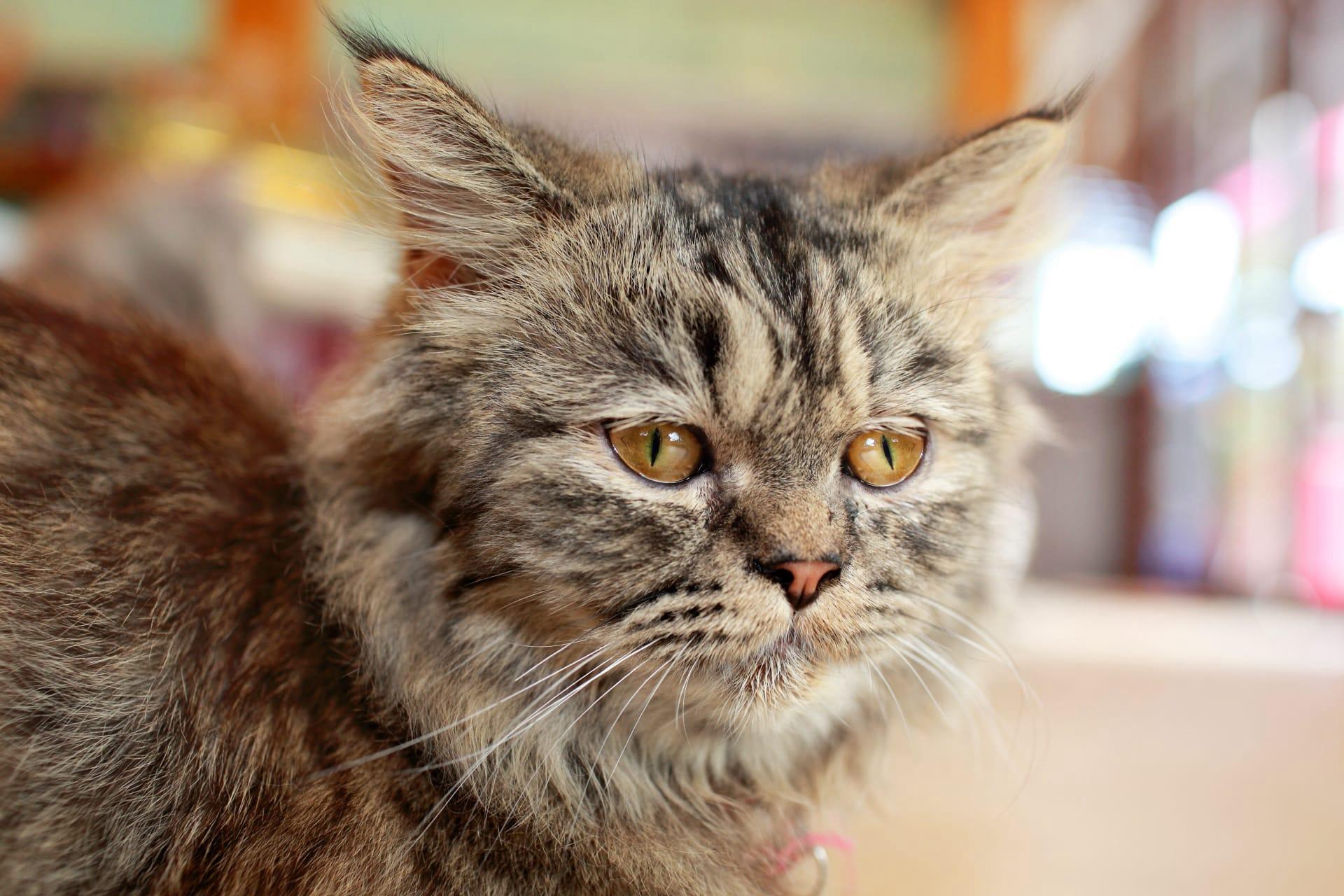1
The Pixiebob Longhair cat, known for its striking resemblance to the wild bobcat, boasts a unique physical trait among domestic cats: a naturally short tail. On average, their tails measure about 2 to 4 inches (5 to 10 cm) in length, though some may have tails slightly longer or shorter. This characteristic tail length is a result of genetic mutation, setting them apart in the feline world. Their plush, long coats add to their wild appearance, with a texture that can vary from soft and silky to slightly woolly, mirroring the adaptability of their wild counterparts to various environments.
Another fascinating fact about the Pixiebob Longhair is its vocal range. Unlike typical domestic cats, Pixiebobs are known for their unique vocalizations, which include chirps, chatters, and growls, in addition to the standard meow. This extensive vocal repertoire is thought to be influenced by their wild ancestry, possibly as a means of complex communication. Researchers have observed that Pixiebob cats use these sounds to interact with their human families and other animals, showcasing a level of social interaction that is highly sophisticated and nuanced.

2
Pixiebob Longhair cats are distinguished by their remarkable intelligence and trainability, traits not commonly emphasized in feline descriptions. Owners and breeders report that these cats are capable of learning commands, tricks, and behaviors similar to those typically associated with dogs, such as fetch, coming when called, and even walking on a leash. This adaptability and willingness to engage in interactive play and learning sessions highlight their cognitive abilities and the potential for strong bonds between Pixiebobs and their human companions.
Another notable characteristic of the Pixiebob Longhair is their polydactylism, which means they can have more than the usual number of toes on their paws. While not all Pixiebobs are polydactyl, those that are can have up to seven toes on each foot. This trait, which is a genetic anomaly, adds to the breed's uniqueness and does not affect their health or mobility. The extra toes can make their already large paws appear even more prominent, contributing to their wild, rugged look.

3
The Pixiebob Longhair cat's social demeanor sets it apart from many other breeds. Known for their loyalty and affectionate nature, they often form strong, dog-like attachments to their families, displaying behaviors such as following their owners from room to room and participating actively in household activities. Unlike the stereotypical aloof cat, Pixiebobs are sociable and enjoy being in the company of their human families, often seeking out physical contact and interaction.
Healthwise, the Pixiebob Longhair is a robust breed with a lifespan that can extend up to 15 years or more with proper care. Their genetic diversity, a result of careful breeding practices, has contributed to a breed with relatively few hereditary health issues. Key to their longevity is a diet tailored to their needs, regular veterinary check-ups, and a stimulating environment that caters to their physical and mental well-being. This focus on health and wellness helps ensure that these unique cats lead long, happy lives as part of their human families.

4
In terms of appearance, the Pixiebob Longhair cat's coat pattern is one of its most striking features. They are often described as having a "wild" look, thanks to their coat that closely resembles that of a bobcat. The coat is typically a tawny brown spotted tabby, marked with a mix of spots, rosettes, and stripes that mimic the camouflage of wild cats. This distinctive patterning not only contributes to their aesthetic appeal but also highlights the breed's origins and the intent of breeders to preserve the natural, wild appearance of these domesticated companions.
Despite their wild appearance and ancestry, Pixiebob Longhair cats are known for their gentle and patient temperament. They are remarkably good with children and other pets, including dogs, making them excellent family pets. Their calm demeanor is complemented by a playful and curious nature, which ensures they are active participants in family life without being overly demanding or aggressive. This balance of traits makes the Pixiebob Longhair a versatile and adaptable companion, capable of fitting into a wide range of home environments and lifestyles.

5
The breeding history of the Pixiebob Longhair cat is as intriguing as the cat itself. The breed was developed in the late 1980s in the United States, with the founding breeders aiming to create a domestic cat with the physical appearance of the North American bobcat. Despite myths and speculation, genetic testing has shown that Pixiebobs do not actually have bobcat ancestry; their unique look is the result of selective breeding among domestic cats with desired traits. This effort to replicate the wild bobcat's appearance while maintaining the temperament of a domestic cat has resulted in a breed that fascinates and delights cat enthusiasts around the world.
Finally, the environmental adaptability of the Pixiebob Longhair is noteworthy. Originally bred from cats that thrived in varied and challenging conditions, Pixiebobs have inherited a ruggedness and resilience that allows them to adapt to both indoor and outdoor living situations. They possess a thick coat that provides insulation against colder weather, and their social nature means they can integrate well into households with access to safe outdoor spaces. This adaptability makes them well-suited to families looking for a cat that enjoys the great outdoors as much as cuddling on the couch.